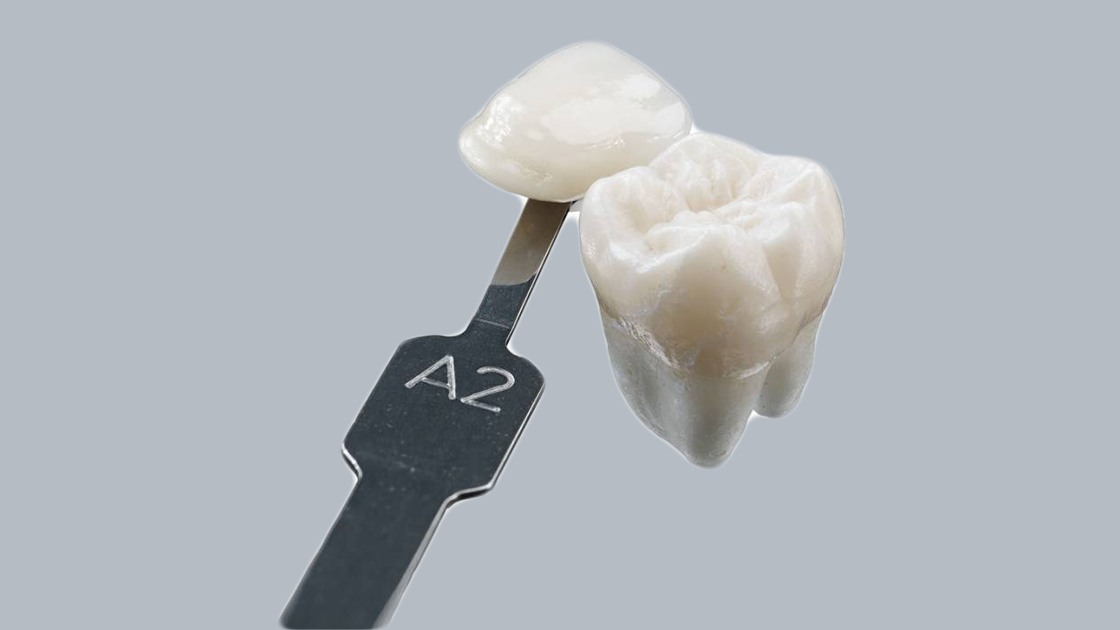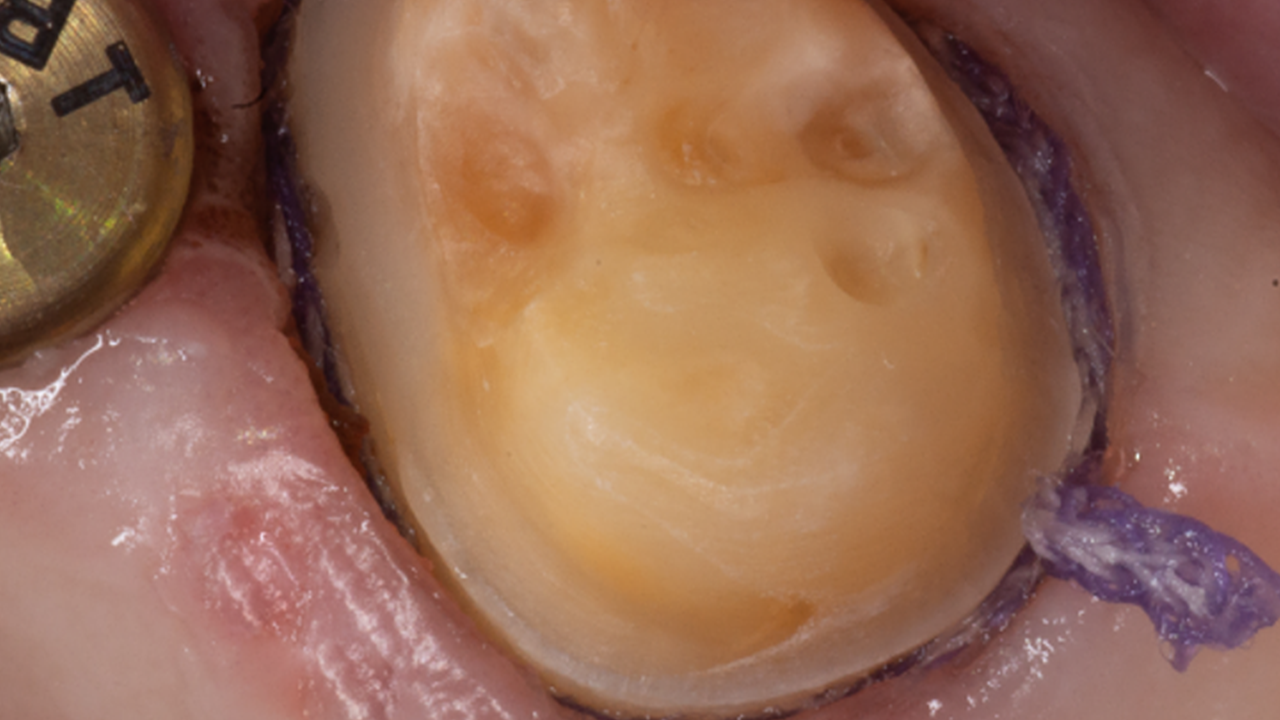Give us a call or provide your contact details below, and a Dentsply Sirona representative will be in touch soon.
Proper contact creation is essential for successful outcomes in Class II restorations, patient comfort, and oral health. Unfortunately, 70% of clinicians report finding proper contact creation and contour the most challenging aspect of Class II restorations.1 Here we’ll look at the challenges that exist in achieving accurate contact creation and suggestions for how to avoid them.
Criteria for proper contact creation
The objective of contact creation is to obtain an interproximal contact that mimics the natural dentition, and should result in the following:
- Contact height at the middle third of the proximal surface, or upper middle third depending on the tooth.
- A tight contact against the adjacent tooth.
- A natural contour with a convex area coronally, a concave area below the contact area supporting the interdental papilla, and appropriate marginal adaptation.
Consequences of poor contact creation
Consequences of poor contact and contour include biofilm accumulation, food impaction, damage to the interdental papilla, periodontal inflammation, bone loss, restoration fracture, dental caries, and patient discomfort. Other potential consequences include tooth displacement, rotation, and poor occlusal contact.
Common challenges and errors during contact creation
Errors during contact creation include inadequate isolation, lack of contact, misplaced contact, or poor contact (too slight or too tight), and poor contour. Fortunately, these errors are all avoidable! Let’s look first at isolation.
Inadequate isolation
Inadequate isolation results in contamination of the clinical site and an inability to properly cure composite. Achieving and maintaining isolation, even with the recommended use of a rubber dam, can be difficult in patients with gingival inflammation and compromised when the gingival tissues are traumatized during procedures. It’s also inherently more difficult to achieve isolation in the posterior region and for deep proximal boxes.2 In fact, 97% of clinicians say that achieving proper isolation of a Class II preparation is difficult in at least 10% of cases.3
How to achieve and maintain isolation for Class II Restorations
- Select a matrix band of sufficient height to reach below the cervical margin of the preparation while also extending slightly beyond the marginal ridge.
- Avoid forcing a wedge into the interproximal area to separate teeth. Instead, use a matrix band system with separating rings that create space between the proximal box and the adjacent tooth to reduce the risk of gingival trauma and bleeding.
- Seal the matrix against the cervical margin using a wedge that’s shaped to be tissue-friendly and that fits snugly without being forced into the area.
- Use a sectional matrix when possible – this limits the area that may be traumatized and bleed in comparison to using a circumferential matrix band.
Causes of open or loose contacts
Open contacts can lead to food impaction, deficient interdental papillae, periodontal pocket formation, and proximal caries. Causes of open or loose contacts include:
- Failure to adequately separate teeth to compensate for polymerization shrinkage of the composite.
- Using a poor-quality composite with excessive polymerization shrinkage.
- Wedges protruding coronally against the matrix band, preventing proper emergence profile and contact creation.
- Using a non-contoured or inadequately contoured matrix band.
- Distorting the matrix band during insertion or during placement of the composite.
- Using a circumferential matrix band for a 2-surface Class II restoration.
- Incorrect placement of the contact area towards the marginal ridge (i.e., more occlusally). This can also result in restoration fracture.
Of note, traditional circumferential matrix bands (e.g., Tofflemire or Siqveland) are not only non-contoured, but also flatten transversely when tightened which can cause the contact area to be closer to the marginal ridge. Designed for active placement and condensation of amalgam restorations, these matrix bands are not suitable for composites.4
Tight contacts
Excessively tight contacts can be caused by overcompensating for the width of the matrix band and polymerization shrinkage, and by distorted matrix bands. Overly tight contacts make it difficult or impossible to insert dental floss.
Poor contours
Poor contours include excessively convex/concave proximal surfaces, inadequate marginal adaptation, inaccurately positioned marginal ridges, overhangs, cervical margin deficiencies (negative overhangs) and ledges.
Proximal boxes that are too convex cervically cause deficient interdental papillae, food impaction and gingival trauma, as can contact areas that are too coronal (or absent). An overly convex area can also make flossing difficult. Overhangs occur when the cervical margin is not properly sealed, while marginal deficiencies can occur if a matrix is too short to extend to and beyond the cervical margin and a wedge is placed coronal to the margin. In both cases, this increases the risk for biofilm accumulation, periodontal disease, and recurrent caries. Ledges in the composite restoration also foster biofilm accumulation and can occur if the matrix band becomes distorted either during insertion or if poorly stabilized while the composite is placed.
Avoiding errors in contact creation
Selecting a matrix band system with pre-contoured matrix bands available in a suitable range of sizes and with appropriate components helps in achieving proper contact creation with a good emergence profile. The matrix band system needs to provide an accurate form for contact creation, an excellent seal for isolation, and minimize gingival trauma and bleeding. Matrix stabilization cervically and coronally is essential and a good fit peripherally prevents composite from extruding at the preparation margins. Lastly, we know from studies that it is all too easy to nick the adjacent tooth while preparing an interproximal box. This has been found to occur in 70% or more of Class II restorative procedures5 and causes roughening of the tooth surface or, if more severe, alters/flattens the contact area. To protect the adjacent tooth, it is recommended to use Palodent® V3 WedgeGuards. These are designed to protect the adjacent tooth from damage while cutting the proximal box of Class II restorations. The WedgeGuard also facilitates more efficient and easier preparation. It also detaches for removal – this leaves the wedge in position and does not disturb the adjacent gingival tissue which reduces the risk of bleeding. Other options include metal strips and wedges to actively separate the teeth, or the use of end-cutting burs to prepare the base of the proximal box at the margins – however, end-cutting burs can cause damage if poorly angled.
It’s clear that selecting a quality composite and matrix band system is essential for successful outcomes. What’s more, with 69% of patients visiting dental offices in a year receiving Class II restorations,6 making a smart selection is imperative for the health of your patients and the health of your practice.
Optimize Contact Creation with Help from Dentsply Sirona
Choosing a quality matrix system and composite are crucial factors in successful contact creation. Fortunately, Dentsply Sirona’s Palodent® family of matrix systems have you covered.
Dentsply Sirona’s Palodent® V3 sectional matrix system is a great choice to enable accurate tight contacts and natural contours. Palodent® V3 matrix system components include the following:
- Palodent® V3 Wedges contoured for optimal adaptation, with wings that compress on entry and flare on exit for an effective seal at the gingival margin - without impinging on the interdental papilla or causing gingival trauma. The wedges are self-guiding, stackable from either side, designed with a pin-tweezer hole for easy placement and removal, and come in 3 sizes.
- WedgeGuards designed to protect the adjacent tooth from damage while cutting the proximal box of Class II restorations and facilitate more efficient and easier preparation. The guard detaches for removal, leaving the wedge in position.

- Nickel-titanium retaining rings that offer outstanding spring strength and memory for tooth separation without the trauma caused by direct wedging. The retaining rings have V-shaped tines to accommodate the Palodent® V3 wedge and offer a flat profile that improves access for optimal curing light placement.
- Sectional matrix bands designed with greater curvature and a pronounced marginal ridge to replicate natural contours, a top tab for easy placement and control, a side tab for easy removal. Also available as Palodent® V3 EZ Coat with a non-reflective, non-stick coating that improves visibility. They are available in 5 sizes, including two larger sizes with a gingival apron for deeper proximal boxes. Also available as Palodent® V3 EZ Coat
- Forceps designed with shaped tines for stability and a locking slider for secure use, for the placement and removal of the retaining rings.
- Pin-Tweezers that grip the Plus Tab-Matrix and Palodent® V3 Wedge.


Palodent® V3 Matrix with Pin Tweezers.
Palodent® V3 Retaining Ring on top of the wedge.
Dentsply Sirona’s Palodent® 360 is an excellent choice for difficult Class II cases when there is no adjacent tooth, too much tooth structure is missing to use a sectional matrix, there is a mis-aligned or severely rotated tooth, or if you simply prefer to use a circumferential matrix band! Palodent 360’s pre-contoured band’s curvature helps you efficiently create restorations with broad contacts in the middle ⅓ of the tooth and with minimal flash. The band is designed for easy insertion, adjustment, and removal, with an integrated and versatile thumbwheel tightener to tighten and loosen the band. This matrix band system is compatible with the Palodent® V3 WedgeGuard, Wedge and Retaining Rings. In one evaluation, 90% of clinicians using circumferential matrix bands reported that the Palodent 360 allowed them to create anatomically correct contacts and contours and provided a clear view of the restorative field.7


Flexible positioning of the thumbwheel tightener.
With Dentsply Sirona’s Palodent® family of matrix band systems, excellent isolation, accurate contact creation and efficiency are all built in.
At Dentsply Sirona, we are here to support you with our entire online dental academy complete with webinars, how-to videos, and real-world examples on how to create streamlined solutions with efficient procedures and even greater patient satisfaction. Contact us now and let’s get started!
References
1 DentalTown (2012). Restorative Dentistry. Monthly Poll: What is the most challenging part of Class II Restoration?
2 Gilbert GH, Litaker MS, Pihlstrom DJ, Amundson CW, Gordan VV. Rubber dam use during routine operative dentistry procedures: findings from The Dental PBRN. Oper Dent 2010;35(5):491-9.
3 Dental Learning Systems, Direct Restoratives Survey, May 2016. N=143.
4 Owens BM, Phebus JG, An evidence-based review of dental matrix systems, “General Dentistry,” September/October 2016.
5 Christensen, Gordon J (2012). Protecting the Adjacent Tooth. Clinician’s Report – Volume 5 Issue 11.
6 Centers for Disease Control and Prevention. http://www.cdc.gov/chronicdisease/resources/publications/AAG/doh.htm, Oral and Dental Health, United States: 2011, table 98.
7 User evaluation United States, 2019. 237 restorations were placed by 52 dentists who indicated their preferred method of restoring Class II cavities was circumferential matrix systems. 90% said the Palodent 360 meets or exceeds their ability to easily recreate accurate tooth contour and create anatomically accurate contact with the adjacent tooth. Dentsply Sirona.











